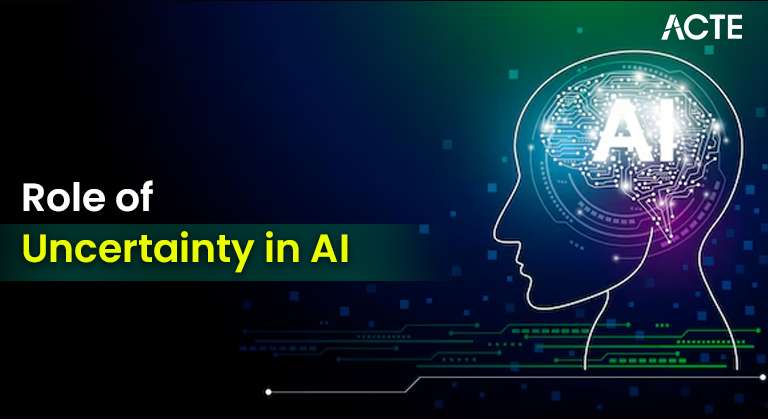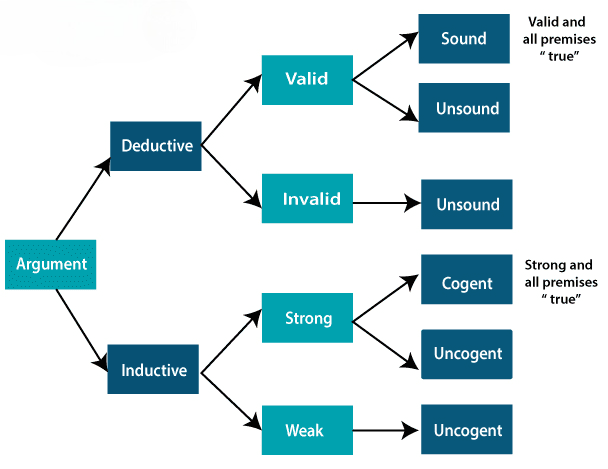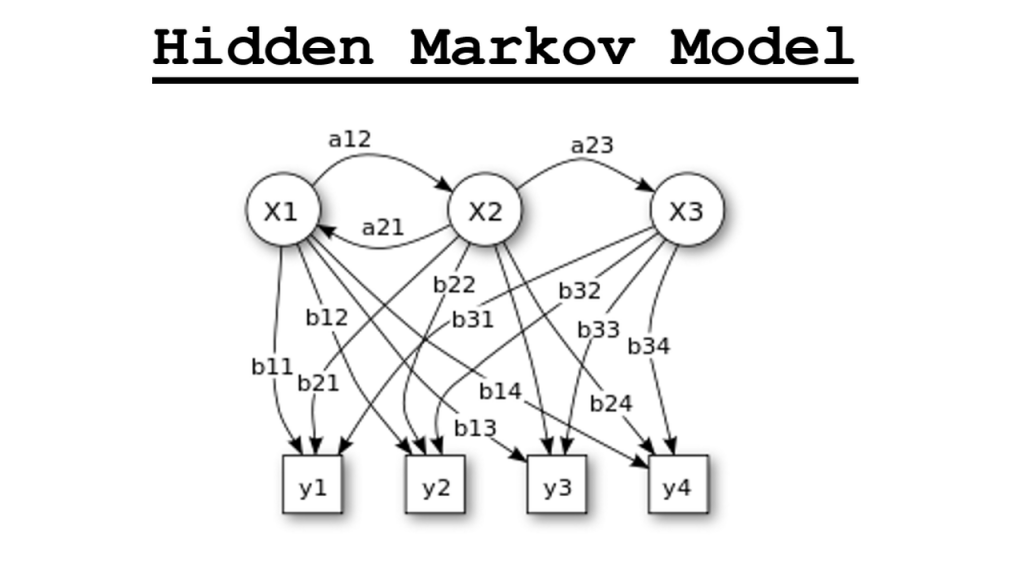
- Introduction to Uncertainty in AI
- Causes of Uncertainty in AI Systems
- Probabilistic Reasoning in AI
- Bayesian Networks and Their Role in AI
- Fuzzy Logic for Handling Uncertainty
- Decision Trees and Uncertainty Reduction
- Markov Decision Processes (MDP)
- Hidden Markov Models (HMM)
- Uncertainty in Natural Language Processing
- Challenges in Managing AI Uncertainty
- Conclusion
Introduction to Uncertainty in AI
Uncertainty is a fundamental challenge in Artificial Intelligence (AI), arising from incomplete, ambiguous, or imprecise information in real-world scenarios. AI systems often operate in environments where data is noisy, missing, or subject to varying interpretations. Data Science Course Training uncertainty can be categorized into several types, including epistemic uncertainty, where the system lacks knowledge about the environment, and aleatory uncertainty, which stems from inherent randomness or unpredictability in processes. Addressing uncertainty is crucial for AI systems to make informed decisions, learn effectively, and adapt to changing circumstances. Techniques such as probabilistic models, fuzzy logic, and Bayesian inference help AI systems quantify and manage uncertainty. Probabilistic reasoning allows for the integration of uncertain data and provides a framework for decision-making under uncertainty, while Bayesian methods enable systems to update beliefs as new information becomes available. In real-world applications, managing uncertainty is essential. For instance, in autonomous vehicles, Artificial Intelligence must navigate unpredictable traffic conditions with incomplete information. In healthcare, AI systems must make diagnostic decisions with incomplete patient data. Effective handling of uncertainty enables AI to provide reliable outputs, improving its ability to function in complex, uncertain environments and supporting decision-making in critical domains.
Causes of Uncertainty in AI Systems
Several factors contribute to uncertainty in AI systems. Understanding these causes helps to determine which methods or techniques to apply to manage and reduce uncertainty in AI systems.
- Incomplete Knowledge: AI systems often operate in environments where not all relevant information is available, leading to incomplete knowledge. This is common in real-time data processing or situations where historical data is unavailable.
- Imprecise Data: Real-world data is often noisy, inconsistent, or ambiguous, creating uncertainty in the information used to VBA in Excel . For instance, environmental noise may affect sensor data, or survey responses might be vague or contradictory.
- Dynamic Environments: Many AI systems interact with dynamic environments where conditions change over time. AI systems must adapt to new, possibly unpredictable situations in these environments, which introduces further uncertainty.
- Complexity in Decision Making: Some AI systems make decisions involving many variables, leading to uncertainty in predicting outcomes. In such cases, precise predictions are often difficult to achieve.
- Lack of Explicit Information: In some cases, information may not be directly observable or measurable, introducing hidden variables that the system must account for, creating additional uncertainty.
Advance your Data Science career by joining this Data Science Online Course now.
Probabilistic Reasoning in AI
Probabilistic reasoning is a fundamental approach to managing uncertainty in AI. It allows AI systems to model uncertain situations and make predictions based on the likelihood of different outcomes. In probabilistic reasoning, AI systems use probability theory to quantify uncertainty and make decisions based on available evidence.Probabilistic reasoning provides a framework for handling uncertainty. It treats it as a probability distribution and makes decisions based on expected outcomes. Key concepts in probabilistic reasoning include:
- Probability Distributions: A mathematical function that provides the likelihood of various outcomes. Data Science Course Training is used to model uncertain variables in AI systems.
- Bayesian Inference: A statistical method used to update the probability estimate for a hypothesis as new evidence is introduced. It is based on Bayes’ Theorem and is widely used in AI systems for decision-making under uncertainty.

Bayesian Networks and Their Role in AI
Bayesian networks (BNs) are powerful tools for representing and reasoning about uncertainty. They are graphical models that represent variables and their probabilistic dependencies. Nodes in a BN represent random variables, and edges represent the probabilistic relationships between these variables.Applications of Bayesian networks in AI include expert systems, medical diagnosis, speech recognition, and natural language processing (NLP).
Key features of Bayesian networks:
- Conditional Independence: BNs allow AI systems to model conditional dependencies between variables. Count in Excel Formula And Implementation makes it easier to compute and update the system’s beliefs as new data becomes available.
- Inference: Once a BN is constructed, probabilistic inference can be used to compute the probability distribution of unknown variables given observed data.
- Handling Missing Data: Bayesian networks can handle incomplete or missing data by estimating the most probable values for missing nodes based on the available information.
- Fuzzy Sets: In fuzzy logic, elements belong to a set to varying degrees, represented by a value between 0 and 1, rather than being strictly included or excluded.
- Fuzzy Rules: EDA in Data Science are conditional statements that help make decisions based on fuzzy sets, such as “If the temperature is high, then the fan speed should be fast.” Fuzzy rules allow systems to reason about continuous variables and ambiguous situations.
- Defuzzification: After processing fuzzy inputs, defuzzification converts the fuzzy output into a crisp value for practical decision-making.
- States: Different situations or configurations in the environment.
- Actions: The decisions or moves available to an agent in each state.
- Transition Probabilities: The probability of transitioning from one state to another after taking a specific action.
- Rewards: The benefit or cost associated with each state-action pair.
- States: Hidden states in the model which are not directly observed.
- Observations: Visible outputs from the system provide evidence about the hidden states.
- Transition Probabilities: The likelihood of moving from one hidden state to another.
- Emission Probabilities: The possibility of observing a particular output given the current hidden state.
- Word Sense Disambiguation: Determining the correct meaning of a word based on its context.
- Parsing Ambiguities: Sentences can have multiple grammatical structures, leading to different interpretations.
- Pronoun Resolution: Identifying the correct pronoun-antecedent in a sentence or paragraph.
- Computational Complexity: Many probabilistic models and algorithms for handling uncertainty, such as Bayesian networks and HMMs, are computationally intensive.
- Scalability: As the complexity of AI systems increases, it becomes more challenging to handle uncertainty in large-scale systems.
- Data Quality: Poor-quality data, including noisy, incomplete, or biased data, increases uncertainty and reduces the reliability of AI systems.
- Interpretability: Understanding and explaining how AI systems handle uncertainty can be challenging, especially with complex models like deep learning.
Become a Data Science expert by enrolling in this Data Science Online Course today.
Fuzzy Logic for Handling Uncertainty
Fuzzy logic is another approach used in AI to manage uncertainty, mainly when the input data is imprecise or vague. Unlike classical binary logic, which uses actual/false values, fuzzy logic allows for reasoning with degrees of truth, making it well-suited for handling ambiguous or uncertain information.Fuzzy logic is commonly used in control systems, such as temperature regulation, robotics, and automotive applications.
Key concepts in fuzzy logic:
Decision Trees and Uncertainty Reduction
A decision tree is a popular machine-learning algorithm that splits data into distinct groups based on feature values. It is a decision-making tool to model decisions and their possible consequences, including outcomes, Natural Language Processing , and benefits. While decision trees don’t inherently account for uncertainty, they can be combined with probabilistic techniques to handle it. For example, decision trees can be used with: Probabilistic Decision Trees incorporate probabilities into decision nodes, providing a way to model Uncertainty Reduction about outcomes. Information Gain The tree-building process uses metrics like entropy and information gain to reduce uncertainty and make decisions based on the most informative features. Decision trees are widely used for classification tasks and are easily interpretable, allowing for transparent decision-making in uncertain environments.
Ready to excel in Data Science? Enroll in ACTE’s Data Science Master Program Training Course and begin your journey today!
Markov Decision Processes (MDP)
Markov Decision Processes (MDPs) are mathematical frameworks used for decision-making in uncertain environments. The outcome of each decision depends on the current state and possible actions. Markov Decision Processes are used to model sequential decision problems. MDPs are widely used in reinforcement learning (RL) algorithms, where an agent learns to make decisions based on environmental rewards while dealing with Uncertainty Reduction in the state transitions.
Components of an MDP include:
Hidden Markov Models (HMM)
Hidden Markov Models (HMMs) are statistical models that represent systems that are assumed to follow the Markov process with hidden states. In HMMs, the modeled system is considered in one of several possible states, but the actual state is not directly observable. Instead, the system emits observations that provide indirect clues about the state. Hidden Markov Models are Mtech in AI And ML used in speech recognition, bioinformatics, and financial modeling, where sequential data and hidden states are common.
Key components of an HMM:

Uncertainty in Natural Language Processing
Natural Language Processing (NLP) deals with the complexity and uncertainty of human language. Ambiguity in language, such as homonyms, syntactic variations, and context-specific meanings, adds uncertainty to NLP tasks. Some challenges include, Techniques like probabilistic models, machine learning, and deep learning are used to reduce uncertainty and improve AI Project Cycle such as machine translation, speech recognition, and sentiment analysis.
Are you getting ready for your Data Science interview? Check out our blog on Data Science Interview Questions and Answers!
Challenges in Managing AI Uncertainty
Despite the various techniques available, managing uncertainty in AI still presents several challenges:
Conclusion
Uncertainty is an inherent challenge in artificial intelligence (AI), as AI systems often deal with incomplete, ambiguous, or noisy data. However, advancements in techniques like probabilistic reasoning, Bayesian networks, fuzzy logic, decision trees, and reinforcement learning enable AI to make more informed and robust decisions despite uncertainty. These methods allow AI to estimate probabilities better, handle ambiguous information, and optimize decision-making under uncertain conditions. As AI advances, new strategies for managing uncertainty are likely to emerge, especially with the integration of cutting-edge technologies like quantum computing and edge computing. Data Science Course Training technologies promise to enhance uncertainty management techniques’ efficiency, scalability, and accuracy, enabling AI to process and analyze data more effectively in real-time and complex environments. Managing uncertainty is not only a technical hurdle but also a crucial factor in ensuring that AI systems operate in a reliable, fair, and transparent manner. This is especially important in real-world applications with high stakes, such as healthcare, finance, and autonomous systems. As AI evolves, the ongoing development of uncertainty-handling methods will ensure that AI systems are trustworthy and capable of making sound decisions in dynamic, uncertain environments.




